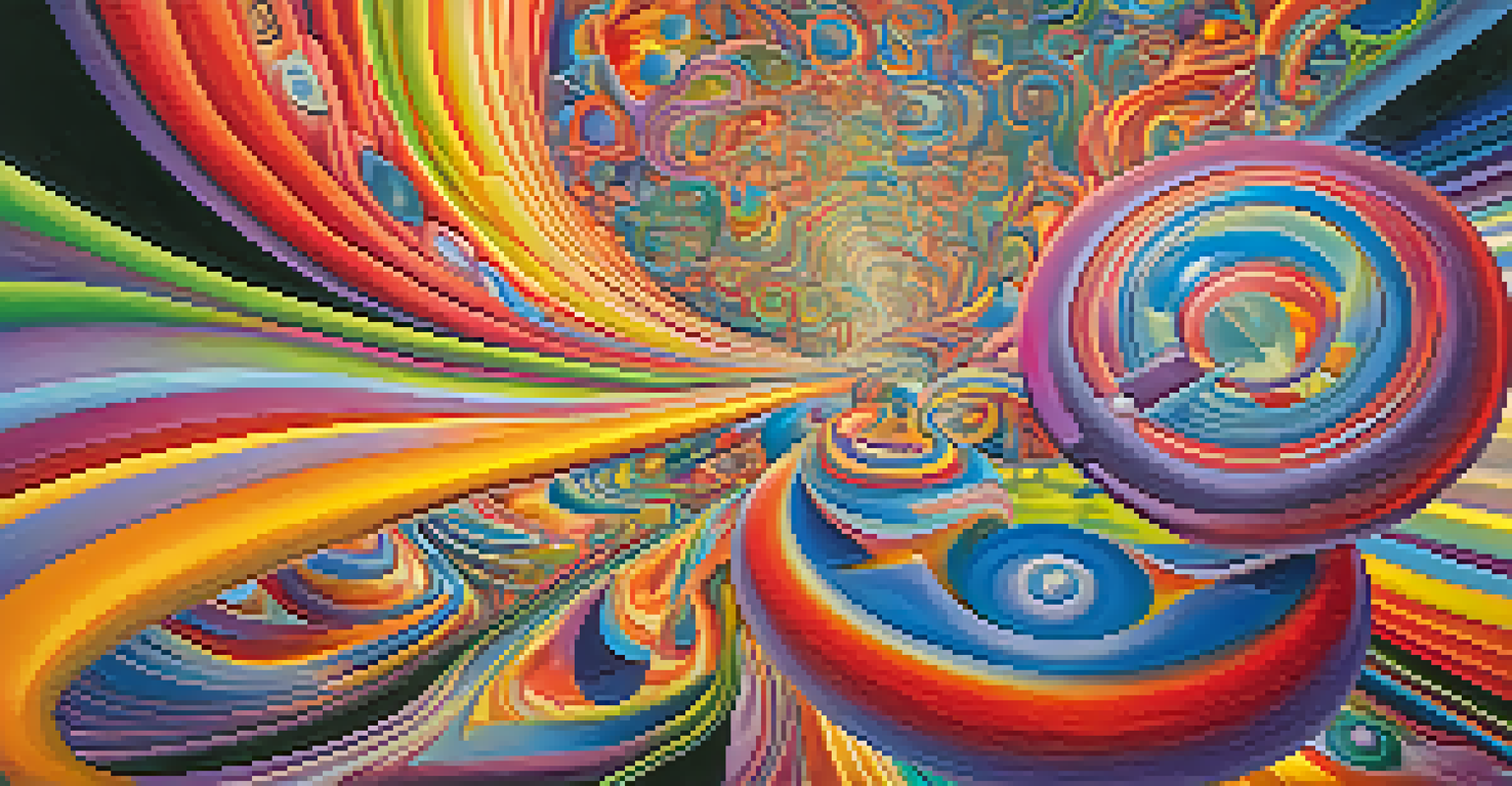Entheogens and Their Impact on Shamanic Traditions

Understanding Entheogens: A Brief Overview
Entheogens are substances that are often used in religious or spiritual contexts to induce altered states of consciousness. Derived from Greek, the term translates to 'generating the divine within.' Common examples include psychedelic plants like peyote and ayahuasca, which have been used for centuries in various cultures.
Psychedelics are not just a tool for personal growth; they can be a bridge to understanding the interconnectedness of all life.
These substances work by interacting with the brain's neurotransmitters, especially serotonin, leading to profound changes in perception, mood, and cognition. This altered state can facilitate deep introspection, spiritual revelations, and connections with the divine.
In many cultures, entheogens are not just tools for recreation but are integral to rituals, healing practices, and community bonding, highlighting their significant role in human experience and spirituality.
The Role of Shamanism in Ancient Cultures
Shamanism is one of the oldest spiritual practices known to humanity, characterized by a shaman's role as a mediator between the physical and spiritual worlds. Shamans often engage in rituals that involve drumming, chanting, and the use of entheogens to connect with spirits and ancestors.

These traditions are prevalent in many indigenous cultures, such as the Native American tribes and Amazonian communities, where shamans are seen as healers and guides. They play a crucial role in maintaining the social and spiritual health of their communities.
Entheogens Foster Spiritual Growth
Entheogens, used in spiritual contexts, promote deep introspection and connections with the divine.
Through these practices, shamans help individuals navigate life's challenges, heal from traumas, and gain wisdom, establishing a deep connection with nature and the cosmos.
How Entheogens Enhance Shamanic Practices
Entheogens serve as powerful catalysts in shamanic rituals, often facilitating visions and insights that are believed to come from the spirit world. These substances can amplify the shaman's ability to communicate with spiritual entities and gain guidance.
The shaman is the one who knows how to navigate the depths of the spirit world, bringing back wisdom for the community.
For instance, in Amazonian shamanism, ayahuasca is consumed during ceremonies, allowing participants to experience vivid visions and profound emotional releases. This process can lead to healing and personal transformations, reinforcing the shaman's role as a healer.
Moreover, the communal aspect of these rituals fosters a sense of belonging and shared experience, further deepening the connection between individuals, their community, and the spiritual realm.
Entheogens in Modern Shamanic Practices
Today, there is a resurgence of interest in shamanic practices and entheogens, particularly among those seeking alternative spiritual experiences or healing methods. Many people are drawn to these substances as a way to explore their consciousness and connect with ancient wisdom.
Modern shamanic practitioners often blend traditional techniques with contemporary insights, creating a unique experience for participants. This evolution reflects a growing recognition of the therapeutic potential of entheogens in addressing mental health issues.
Shamanism Connects Cultures and Spirits
Shamanism serves as a bridge between the physical and spiritual worlds, helping individuals heal and gain wisdom.
As more people engage with these practices, they often report transformative experiences that can lead to greater self-awareness and emotional healing.
Cultural Perspectives on Entheogens and Shamanism
Different cultures have unique perspectives on entheogens and their role in shamanic practices. For example, in some indigenous communities, the use of these substances is sacred and tightly regulated, while in others, they may be more widely accessible.
This disparity can lead to misunderstandings when these practices are adopted by individuals outside of their cultural context, potentially resulting in appropriation rather than appreciation. It’s essential to approach these traditions with respect and understanding.
Recognizing the cultural significance of entheogens helps preserve the integrity of these practices and promotes a more respectful dialogue between cultures.
The Science Behind Entheogens and Their Effects
Research into the effects of entheogens is growing, with studies indicating their potential benefits for mental health, including alleviating symptoms of depression and PTSD. By understanding how these substances interact with the brain, scientists are uncovering their therapeutic possibilities.
Psychedelics like psilocybin and LSD have shown promise in clinical settings, leading to renewed interest in their use in therapy. This scientific validation supports the traditional practices of shamans, bridging ancient wisdom with modern medicine.
Modern Interest in Entheogens Grows
There is a rising interest in entheogens for alternative healing and spiritual exploration among contemporary practitioners.
However, it’s crucial to approach this research ethically and responsibly, ensuring that the cultural contexts of these substances are respected and preserved.
Challenges and Controversies Surrounding Entheogens
Despite their potential benefits, the use of entheogens is often surrounded by controversy and legal challenges. Many substances are classified as illegal in various parts of the world, which complicates access for those seeking healing through shamanic practices.
The stigma associated with these substances can also hinder legitimate research and the integration of traditional practices into modern wellness approaches. It’s important to advocate for informed discussions about their benefits and risks.

As society continues to explore the therapeutic potential of entheogens, a balanced understanding of their cultural significance and scientific research is essential for fostering respectful engagement.